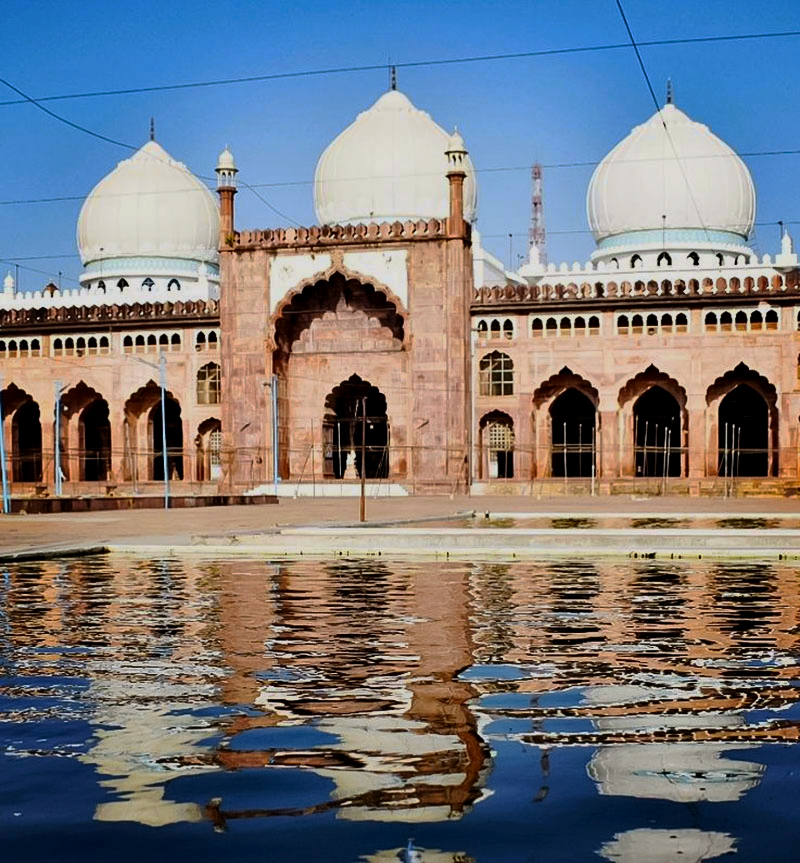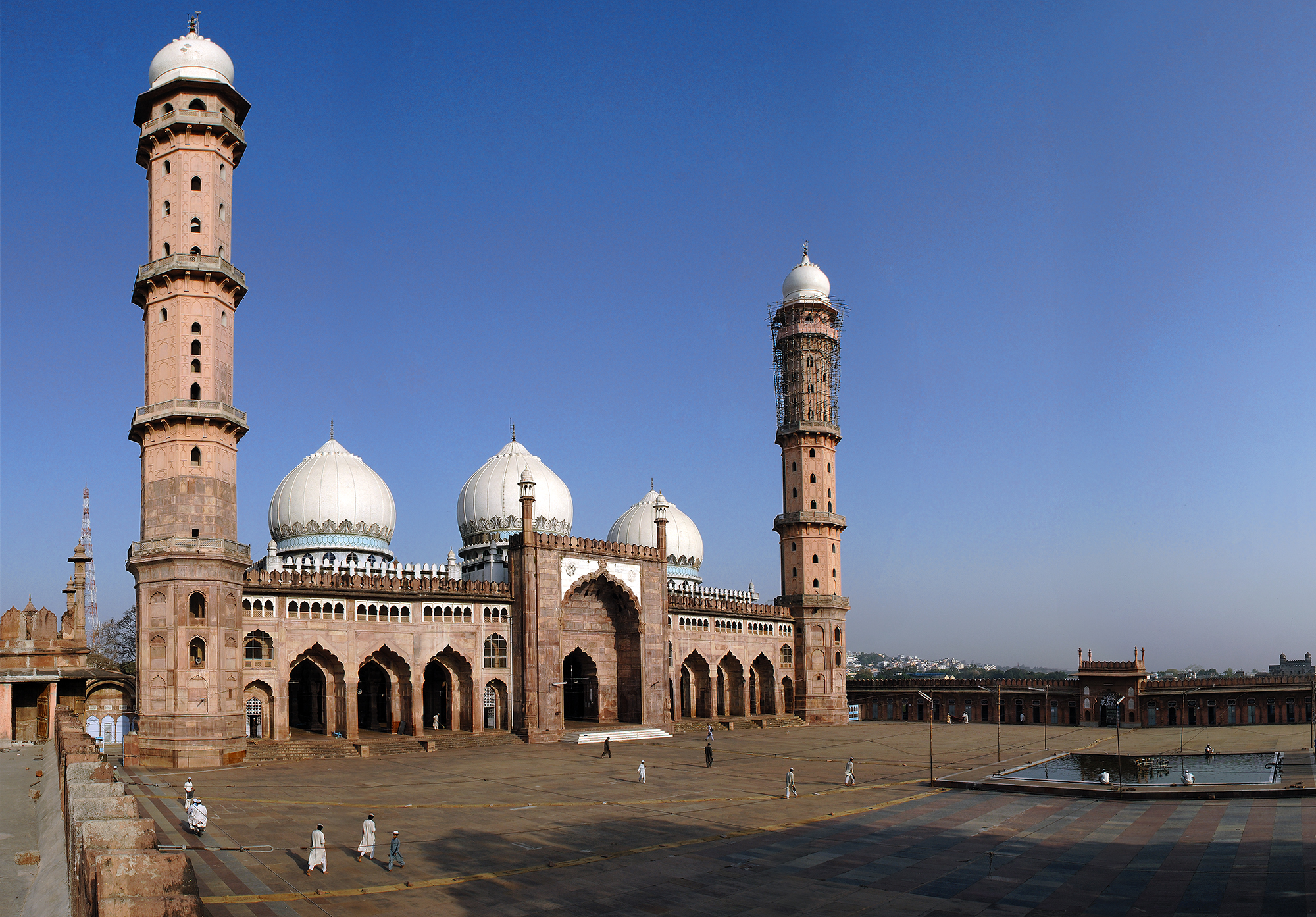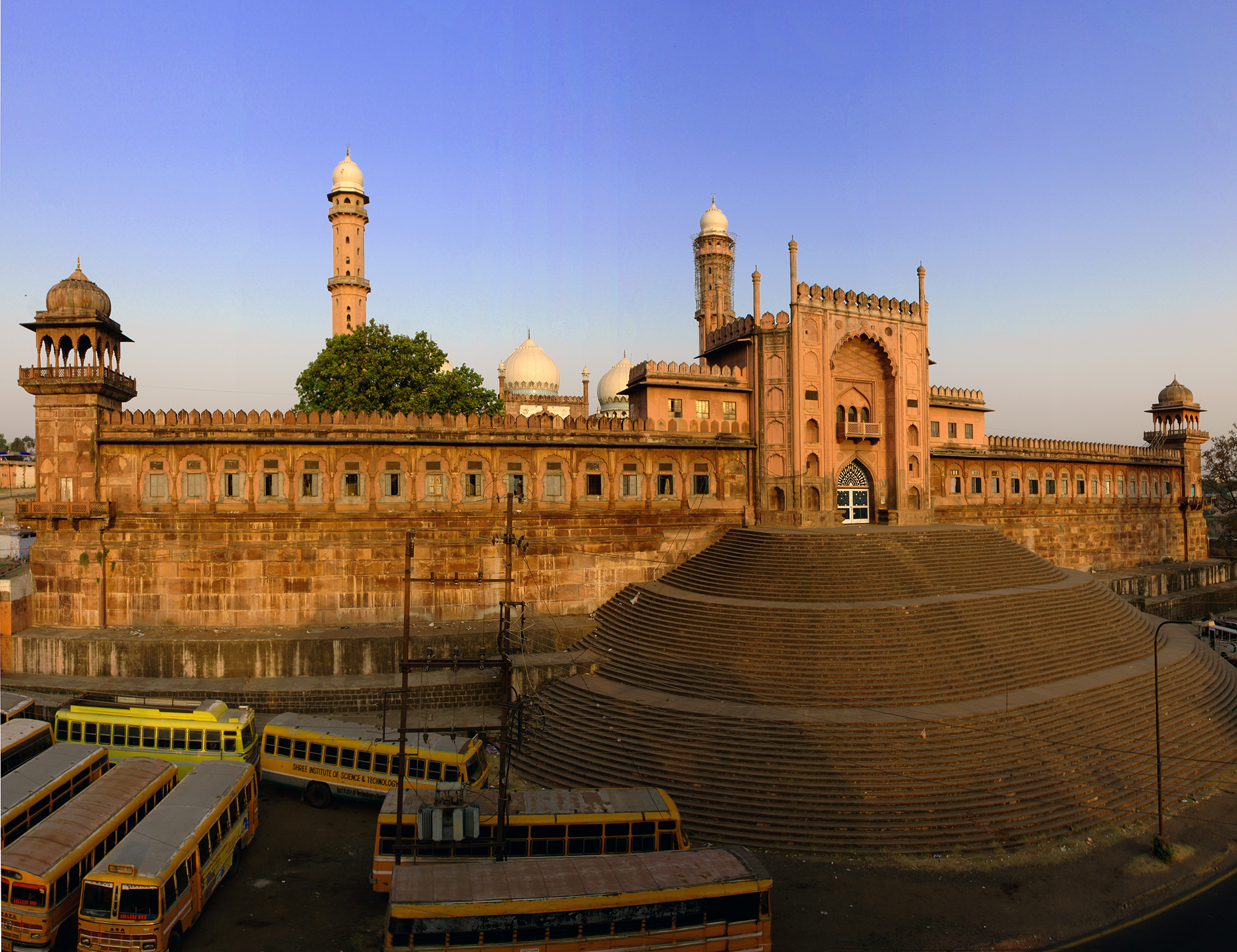ARTICLE
Taj-ul-Masajid, Bhopal
Each of the two attached minarets flanking the prayer hall are octagonal, feature four balconies and are topped by a small white dome. Several windows are placed at irregular intervals, with false windows carved in mid-relief in between, creating a pattern of arches wrapped around each minaret. These minarets were the first in the region to be built using reinforced concrete — a material generally associated with modern architecture — encased in a pink sandstone facade. The complex also contains a madrassa, a library and lodgings at its eastern end. The mosque is located near three water bodies—the Motia Talab, the Munshi Hussain Talab and the Noor Mahal Talab — which were earlier used for ablutions by worshippers; dedicated ablution tanks were later built in the northeastern corner of the mosque courtyard.
The main prayer hall has twelve pillars made of sandstone, carved in ornate arabesque and floral designs which are most heavily featured on the base. Multifoil arches form vaults with internal, unadorned domes that are not visible from outside. The qibla wall is a recessed apse and arched doorway, and is unadorned save for a panel of calligraphic Quranic text.
The mosque also has two zenana galleries at the north and south ends of the mezzanine floor, designated for women and entered via jaali doorways at the ground floor inside the main hall. A feature of Begum Shahjahan’s patronage, this spatial provision was uncommon at the time, as relatively few mosques accommodated female worshippers.
The architecture of the mosque combines elements from several notable Mughal mosques. The monumental eastern entrance consists of a two-storeyed arch inspired by the Buland Darwaza in Fatehpur Sikri. Its overall design shares an affinity with the Jama Masjid in New Delhi and the Badshahi Mosque in Lahore, with smaller entrances at the north and south, in addition to the main entryway leading to a central courtyard.
While the mosque’s construction began under Nawab Begum Shahjahan, it could not be completed during her lifetime owing to lack of funds and her involvement in several other architectural projects. It remained under construction throughout the reign of her daughter Nawab Begum Sultan Jahan (r. 1901–26). The final phase of construction was initiated in 1971 by Allama Mohammad Imran Khan Nadwi Azhari and Maulana Sayed Hashmat Ali Khan of Bhopal and was finally completed in 1985. Till 2004, the Taj-ul-Masajid was also the site of the Aalmi Tablighi Ijtima, an annual three-day congregation for theological discussions. The mosque continues to be in use to this day.
Bibliography
Ahmed, Firoz Bakht. “Wondrous Masjid.” Deccan Herald, March 17, 2013. Accessed September 13, 2022. https://www.deccanherald.com/content/319283/wondrous-masajid.html.
Hussain, A., and S. Akhtar. “Visual Analysis and Schmidt Rebound Hammer Test of Taj-ul-Masajid.” Informes de la Construcción 69, no. 547 (July–September 2017). Accessed July 9, 2022. https://informesdelaconstruccion.revistas.csic.es/index.php/informesdelaconstruccion/article/download/5864/6871/11333.
Mulchandani, Anil. “Taj Ul Masajid.” The Times of India, December 11, 2015. Accessed September 28, 2022. https://timesofindia.indiatimes.com/travel/Bhopal/Taj-ul-Masajid/ps50138425.cms.
Sharma, Jyoti Pandey. “Sacralizing the City: The Begums of Bhopal and their Mosques.” Journal of Creative Space 1, no. 2 (2014). Accessed September 7, 2022. https://cs.chitkara.edu.in/index.php/cs/article/view/99/92.
Vyajay, Sandy N. “A Queen’s Mark in Bhopal.” Deccan Herald, December 15, 2018. Accessed September 11, 2022. https://www.deccanherald.com/sunday-herald/queens-mark-708134.html.










